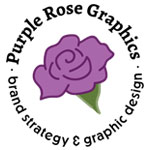You just contracted with a graphic designer to work on your design. Congratulations! Now they are asking you questions like “Do you want your design as a PDF or a JPG?” or “Do you need a GIF too?” Eveyone deals with these file types on a daily basis, but few people know what they are or the differences between the various types. If that’s the case for you, then keep reading!
PDF: Stands for “Portable Document Format”. According to Wikipedia, the PDF format was created by Adobe Systems co-founder John Warnock in 1991. It was released to the public free of charge in 1993, but didn’t enter the public domain (i.e. become something that doesn’t need copyright) until 2008. PDF formats are most often used to allow documents to be transmitted while keeping their original format As a friend of mine in college said, “It’s like taking your document and sealing it in a plastic bag.” Unless you have specific software to make changes to a PDF, you can’t touch the contents of it.
USE THIS FOR: Viewing proofs from your designer, sending finished files to a commercial printing company, and sending documents for someone to view when they don’t have access to the original program and you want to make sure the document retains its original formatting . PDF files do require a special program, called a PDF viewer, in order to view the file. These programs can be downloaded for free. Also many internet browsers have built in viewing capability.
JPG or JPEG: JPEG is the acronym for “Joint Photographic Experts Group”, the group that developed and released this file format,. JPEG files were born in the early 1990’s and were meant to compress digital photographs from huge files into small files that could easily be shared and viewed via computers of the time. Remember computers 20 plus years ago ran at a much slower speeds and had less memory than modern machines. These file types are referred to as “lossy” compression files, meaning that they dump information (usually pixels) in order to compress the file. This process can affect the image quality under certain circumstances. For example, the file must have all pixels filled in, so if you have an image with a clear background, the background will get filled in with a solid color (usually white). Conversion of a file to a JPEG format also will seal the file at its compressed size. For example, an image with very small dimensions, such as a postage stamp, will look best at this same small size. However, it will distort, or “pixelate”, if stretched to a larger size.
USE THIS FOR: Images or any file that need to have a small file size. Good for sharing images via email. Can be printed on a desktop printer, but does not always print well if printed commercially. In order for this file type to print well commercially, the image must match certain image resolution standards, so ask your designer or commercial printing professional what resolution they prefer.
GIF: “Graphic Interchange Format” or GIF has been around since the late 1980’s. It has a very limited palette of colors, but is very versatile and was a very popular web format until a few years ago. It uses a “lossless” compression format, which means that it compresses the file without losing information or image quality. Because GIF files are so versatile, GIF is has become popular, Also, it is easy to use them to make small animated files such as a stick figure waving hello or a ball spinning. You can also loop pieces of video and save as this file type, and it will play well on the internet.
USE THIS FOR: Websites and anytime having a clear background to your image will matter.
There are a lot more file types than just the ones I’ve mentioned, but these are some of the basic ones. Next time you get asked if you’d prefer a GIF or JPG, you’ll be able to answer with confidence! If you have any questions or need help with your next graphic design project, please contact me!
